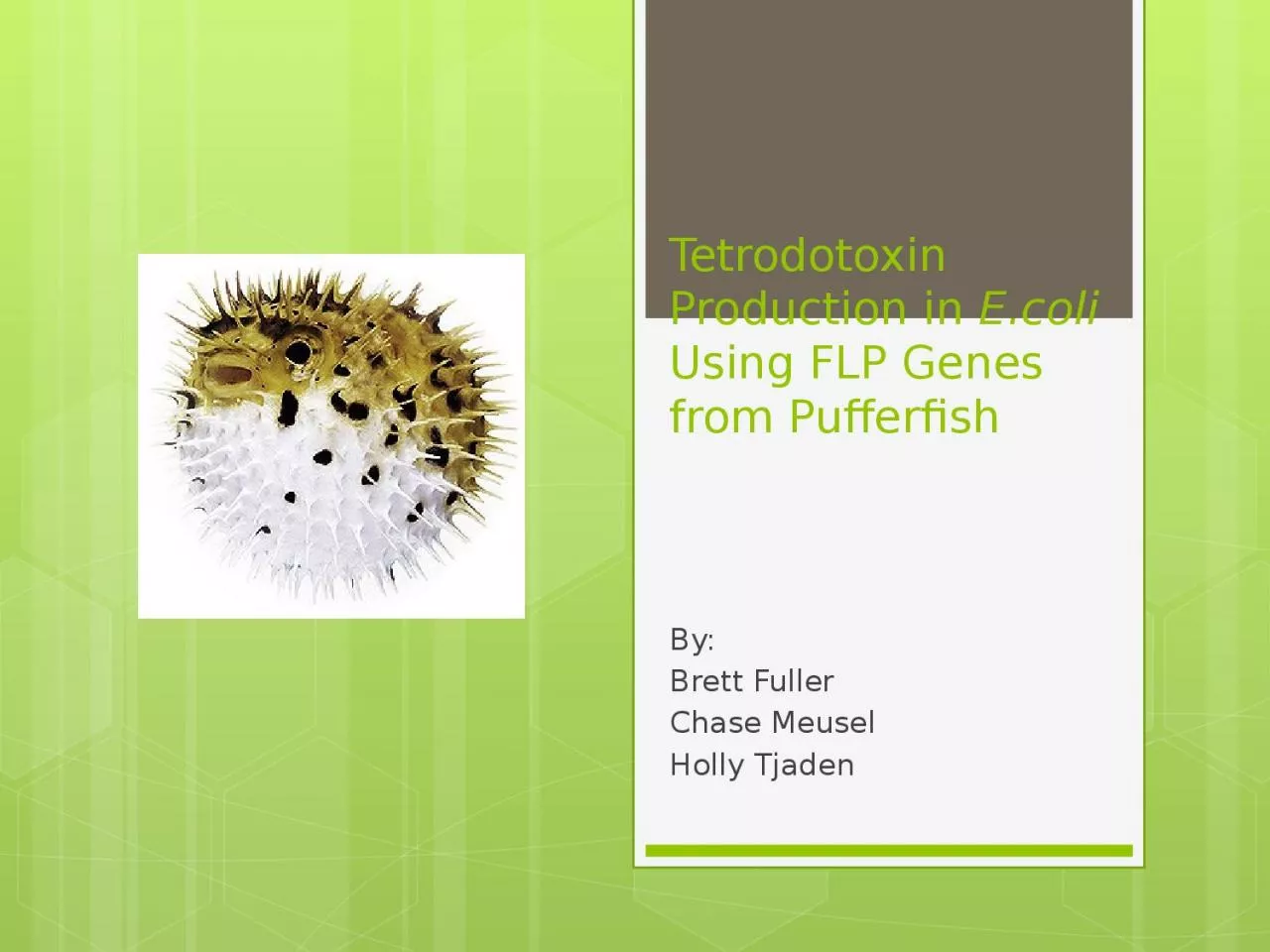

Ecoli Using FLP Genes from Pufferfish By Brett Fuller Chase Meusel Holly Tjaden Goals To Isolate tetrodotoxin genes FLP from the pufferfish Isolate an orange fluorescence gene from ID: 935260
Download Presentation The PPT/PDF document "Tetrodotoxin Production in" is the property of its rightful owner. Permission is granted to download and print the materials on this web site for personal, non-commercial use only, and to display it on your personal computer provided you do not modify the materials and that you retain all copyright notices contained in the materials. By downloading content from our website, you accept the terms of this agreement.
Slide1
Tetrodotoxin Production in E.coli Using FLP Genes from Pufferfish
By:Brett FullerChase MeuselHolly Tjaden
Slide2Goals
To Isolate tetrodotoxin genes (FLP) from the pufferfish.Isolate an orange fluorescence gene from biobrick BBa_K152005.
Combine the FLP gene with the
biobrick
gene using the
biobrick
restriction sites.
Insert the combine FLP gene into a plasmid and replicate the gene-containing plasmid in
E. coli.
Test whether the genes were successfully replicated by exposing the bacteria to UV radiation.
Slide3Back-up PlansFLP is a conglomerate of three different FLP genes. If the larger of the three genes does not work, we can isolate the other two and test them as well.
Slide4Procedure1
. Obtain live puffer fish specimen and extract the total genomic DNA from fin tissue using a kit from Dr. Berendzen.2. Design primers to amplify the three FLP genes identified as well as a gene for orange fluorescence to confirm that the
FLP
genes should be getting expressed. These primers should also contain the restriction site ends that are required for
biobrick
usage.
3
. Amplify all
three FLP genes
using PCR from the total genomic DNA isolated from the puffer fish tissue.
4
. Amplify the orange fluorescence
gene (BBa_K152005)
from the
biobrick
plasmid using the provided procedure.
5
. Ligate the orange fluorescence gene and one or more of the
FLP
genes.
6
. Ligate the combined genes into a plasmid and
transfer
the plasmid into the
bacteria,
E. coli
.
7
. Allow the bacteria to grow up and plate them
on selective LB media with ampicillin.
8
. Test bacterial colonies for fluorescence using UV radiation.
Slide5Part and Sequence DetailsPrimer details:FLP1-F =
E-X-ATTCGACACCCAGCAGGGAAGFLP1-R = CACGAGTATTTATTAGATCA-S-PFLP2,3-F = E-X-GGAAGATGGAGCGAGTGACTFLP2-R =
ACGGTGCCATATCTGATAGG-S-P
FLP3-R =
GGGAGTCTTTAGTGTTTATT-S-P
Slide6How will we test it?In order to ensure that our plasmid is in the bacteria, we will plate it on media with ampicillin (or whatever the plasmid carries a resistance to).
If the bacteria grows, we will expose the bacteria to UV radiation. If it glows, we know that the plasmid is in the bacteria.Or eat it?!
Puffer Fish Dining Video from National Geographic